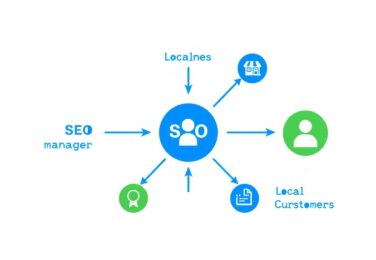How UX will improve your Search Engine optimisation

Table of Content
As an Aussie business owner, I face the challenge of standing out online. Creating a website that looks good and works well is tough. But, I’ve found that improving your SEO starts with great user experience (UX).
In this article, we’ll look at how UX and SEO work together. We’ll find ways to boost your online presence. By understanding your audience, we’ll learn how to make your ux with seo and user experience optimization better. Get ready to discover how to improve your seo-friendly design and usability and search engine visibility.
Key Takeaways
- Discover the powerful synergy between UX and SEO for a winning digital strategy
- Learn practical ways to enhance your responsive web design for seo and content and ux for search engines
- Understand how to create a search engine optimization ux that captivates your audience
- Explore the importance of ux and seo integration for long-term success
- Gain insights into the latest trends and best practices for optimising your digital presence
What is UX and Why Does it Matter for SEO?
Understanding user experience (UX) is key in SEO. UX is how users feel when they use your website or digital product. It includes things like how easy it is to navigate, the quality of the content, and how it looks.
Understanding User Experience (UX)
UX puts the user first. It means making your website or app easy to use and valuable. This way, users have a good time and find what they need quickly.
The Relationship Between UX and SEO
UX and SEO work together. Search engines like Google want to show websites that are good for users. So, ux with seo is a great team.
A website that’s easy to use, has good content, and looks nice will please visitors. It also tells search engines your site is reliable. This can help your site rank higher, get more visitors, and turn more visitors into customers.
Using seo-friendly design helps your website look good and do well in search engines. By focusing on both user experience and SEO, you’ll build a strong online presence that attracts your target audience.
Improving Site Navigation for Better UX
Improving your website’s navigation is key to better usability and search engine ranking. A user-friendly menu helps visitors find what they need easily. This boosts engagement and tells search engines your site is user-friendly.
Here are some tips to make your navigation better for your audience and SEO:
- Organize Your Content Logically: Group related pages into clear categories. This makes it easy for users to find what they need.
- Implement a Hierarchical Menu Structure: Use a top-level menu with sub-menus. This creates a clear path for users to follow.
- Optimize Menu Labels: Use short, descriptive labels. This helps users understand where they’re going.
- Ensure Mobile-Friendly Navigation: Make your navigation work well on mobiles. Use a clean layout and easy-to-tap items.
- Incorporate Breadcrumb Navigation: Add a breadcrumb trail. This shows users where they are and how to go back.
By following these tips, you’ll make your site easier to use and more visible to search engines. This will also improve the user experience, leaving a good impression on visitors and search engines alike.
| Feature | Benefit |
|---|---|
| Logical Content Organization | Helps users find information quickly and easily |
| Hierarchical Menu Structure | Provides a clear and intuitive navigation pathway |
| Optimized Menu Labels | Ensures users understand where each menu item leads |
| Mobile-Friendly Navigation | Delivers a seamless experience across all devices |
| Breadcrumb Navigation | Allows users to track their location and navigate back easily |
By using these strategies, you’ll improve your website’s usability and search engine ranking. You’ll also make the search engine user experience better. This will leave a positive impression on both your visitors and search engines.
UX with SEO: Enhancing On-Page Elements
When we talk about user-centric SEO strategies, we must focus on improving your website’s on-page elements. This means making your content easy to read and using the right keywords naturally. By combining UX and SEO, you can make your content rank well and offer a great user experience.
Optimising Headings and Content Structure
How you arrange your content affects both user experience and SEO. Using clear headings and organising your content well makes your site easier to use. This can also help your site rank better in search engines, as they look for sites that are easy to use and offer good content.
Incorporating Relevant Keywords Naturally
Adding the right keywords to your content is key for SEO, but do it in a way that doesn’t hurt the user experience. Instead of just adding keywords, make sure they add value to your readers. This way, your content stays engaging and informative, improving the user’s experience.
“The key to effective SEO is to create content that speaks directly to the needs and interests of your target audience, rather than optimising solely for search engines.”
By focusing on the user and naturally adding keywords, you can make your on-page elements better for both search engines and users. This approach will not only help your site show up more in search results but also make sure your visitors have a great time on your site.
Creating a Mobile-Friendly Experience
In today’s world, having a website that works well on mobiles is key for SEO and UX. More people use their phones and tablets to browse the web. So, it’s important to make our websites mobile-friendly. By using responsive web design for SEO, we make sure our content works well on all devices. This improves our search engine optimization UX and UX and SEO integration.
Responsive Design and Mobile Usability
Responsive design makes our websites work well on mobiles. It changes how our site looks and works based on the device. This means our site is always easy to use, no matter the device. By focusing on responsive web design for SEO, we make our site better for search engines and users.
We also need to make sure our site is easy to use on mobiles. This means making sure navigation, forms, and calls-to-action work well on small screens. A mobile-friendly site keeps users engaged, lowers bounce rates, and helps our search rankings.
| Feature | Benefit |
|---|---|
| Responsive Design | Automatically adapts to device size and orientation, ensuring a seamless experience across all platforms. |
| Mobile-Optimised Navigation | Streamlines user interactions on small screens, making it easy for mobile visitors to find what they’re looking for. |
| Optimised Content and Functionality | Ensures key information and features are accessible and engaging on mobile devices, enhancing overall usability. |
By focusing on responsive design and mobile usability, we improve our search engine optimisation UX. This approach meets user needs and keeps up with search engine changes. It’s crucial for staying ahead in today’s mobile world.
Boosting Page Load Times for Seamless UX
Australians have no patience for slow websites. Page load time is key for good UX and SEO. Faster websites mean better user experience and higher search rankings.
Image compression is a big help. Good images grab attention but slow sites down. Tools like TinyPNG and JPEG Optimizer make images smaller without losing quality.
Minimising code is another smart move. Less HTML, CSS, and JavaScript means faster sites. Code minification and file bundling help keep sites fast and functional.
| Technique | Impact on Page Load Time | Ease of Implementation |
|---|---|---|
| Image Compression | High | Moderate |
| Code Minification | Moderate | High |
| Caching | High | Moderate |
Caching is also a game-changer. It stores static content on devices, cutting down server requests. This makes sites load faster for returning visitors.
A smooth user experience is vital for SEO success. Fast page loads attract visitors, boost rankings, and increase website traffic.
Utilising Visual Content for Engagement
In today’s digital world, visual content is key to a great user experience (UX). As SEO changes, using images, videos, and more can boost both usability and visibility. This approach not only keeps your audience engaged but also helps with search engine rankings.
Images and Their Impact on UX
High-quality images can catch your website visitors’ attention and make your content stand out. Optimised images can also help with usability and search engine visibility. By using relevant keywords in alt text and file names, you can improve the search engine user experience and reach more people.
Videos: Elevating the Content and UX Experience
Video content is getting more popular, and it’s easy to see why. Good videos can share information, tell stories, and make your site more engaging. Optimised videos can also boost your site’s search engine visibility and content and UX performance.
| Optimisation Technique | Impact on UX | Impact on SEO |
|---|---|---|
| Optimising image file size and format | Faster page load times, improved usability | Enhanced search engine visibility and user experience |
| Incorporating relevant keywords in image alt text and file names | Improved accessibility and relevance for users | Better indexing and ranking for search engines |
| Adding captions and transcripts to videos | Improved accessibility and inclusivity | Enhanced search engine visibility and user experience |
| Optimising video file size and format | Faster page load times, seamless playback | Improved search engine visibility and user experience |
By carefully adding visual content and optimising it, you can make your site more engaging and user-friendly. This approach will help you connect with your audience and grow your online presence.

Crafting User-Centric Content
At the heart of any successful SEO strategy is knowing your audience well. By making content that meets their needs and preferences, we create a great user experience. This not only connects with them but also helps your site rank better.
Understanding Your Target Audience
To make content that grabs your audience’s attention, we need to understand who they are. We do this through deep research and analysis. This way, we learn about their demographics, interests, and challenges.
This knowledge helps us tailor our user-centric SEO strategies. We make sure our content and UX are perfect for both search engines and users.
By focusing on content and UX for search engines, we create valuable content. This approach ensures our content ranks well and provides real value to our audience. It’s a holistic search engine optimisation UX mindset that delivers great experiences.
“The more you understand your target audience, the better you can craft content that speaks directly to their needs and pain points.”
As we dive into user-centric SEO strategies, remember content creation is a continuous process. We must keep improving and adapting based on what we learn about our audience. By focusing on their needs and delivering top-notch content and UX for search engines, we can reach our full potential.
Analysing User Behaviour and Metrics
To improve ux and seo together, it’s key to study user behaviour and important metrics. Knowing how your audience uses your site helps you make better choices. This way, you can make your site better for both users and search engines.
We’ll look at how to track and understand data like bounce rates and conversion rates. These numbers show where your site can get better. This helps you make your site more interesting and useful for your customers.
Uncovering User Insights
With web analytics tools, we can learn a lot about your site’s visitors. Important metrics include:
- Bounce rate: The percentage of visitors who leave after seeing just one page.
- Time on page: How long users stay on each page.
- Conversion rates: The percentage of visitors who do what you want them to, like buying something.
By looking at these numbers, we find out what works and what doesn’t. This helps us make your site better for everyone.
Optimising for Improved UX and SEO
With a better understanding of your users, we can make your site better. This might mean making it easier to use, faster, or more interesting. By focusing on these areas, we can make your site better for both users and search engines.
| Metric | Benchmark | Your Current Performance | Improvement Opportunities |
|---|---|---|---|
| Bounce Rate | Below 40% | 45% | Make content more relevant and user-friendly |
| Time on Page | Above 2 minutes | 1 minute 30 seconds | Make content more engaging and useful |
| Conversion Rate | Above 3% | 2% | Make it easier for users to take action |
By always looking at user behaviour and metrics, we can find ways to make your site better. This approach helps you create a site that is easy to use and works well with search engines. It makes your site more appealing to your audience and improves your online presence.
Conducting Usability Testing for UX Insights
In today’s digital world, user experience optimisation is key for any business wanting to improve their seo-friendly design. It’s also crucial for delivering top-notch user-centric seo strategies. Usability testing is a powerful tool that lets us get direct feedback from our audience.
Usability testing means inviting real users to try out our website or app. We watch how they use it and ask for their thoughts. This way, we learn how to make our digital space better for everyone.
- First, we set clear goals for our testing. Are we checking if our site is easy to use? Or maybe how well our content is organised? Or perhaps we want to see how users react to new features?
- Then, we aim to include a wide range of users. This means people with different skills, backgrounds, and ways of using the internet.
- While our users test our site, we pay close attention. We listen to their thoughts and note any problems they face. These insights help us improve our user experience optimization and seo-friendly design.
By using what we learn from usability testing, we can keep making our digital experience better. This not only keeps users engaged but also makes our brand more trustworthy. It’s a win-win for both our customers and search engines.

| Metric | Benchmark | Post-Testing |
|---|---|---|
| Task Completion Rate | 80% | 92% |
| Time on Task | 120 seconds | 90 seconds |
| User Satisfaction | 4/5 | 4.5/5 |
“Usability testing is not just a box to tick, but a powerful tool that can transform our digital experiences and drive real, measurable results.”
Incorporating Accessible Design Principles
At the heart of great user experience (UX) and search engine optimisation (SEO) is accessibility. By using inclusive design, we make websites for everyone. This improves both user experience and search engine rankings.
Making Your Site Inclusive for All Users
Inclusive design is key to a good UX and SEO strategy. It shows we care about serving a diverse audience. It also tells search engines our site is valuable and easy to use.
We need to make sure our sites work with tools like screen readers. This means making our content easy to follow, with clear headings and alt text for images. Our pages should also work well with just a keyboard.
We also need to think about users with different needs. This includes adding captions to videos and making complex images easy to understand. Our content should be simple and clear for everyone.
By following these accessible design rules, we make our site better for everyone. This shows search engines we focus on all users. This can help our SEO, as search engines favour sites that are easy for everyone to use.
“Accessibility is not just about complying with regulations; it’s about creating a truly inclusive online experience that benefits everyone.”
By using accessible design, we make our UX and SEO strategy work better. Our site will rank well in search results and be valuable for all users.
UX with SEO: A Continuous Process
In today’s fast-paced digital world, combining user experience (UX) and search engine optimisation (SEO) is essential. Australian businesses aim to engage their audience and improve their search rankings. This journey is ongoing, requiring constant improvement and refinement.
At the core of this approach is the understanding that usability and search engine visibility are linked. By focusing on user experience, we improve search engine user experience and unlock the full potential of ux and seo integration.
- Regularly monitor user behaviour and feedback to identify areas for improvement.
- Conduct ongoing usability testing to ensure your website remains intuitive and user-friendly.
- Continuously optimise on-page elements, such as headings and content structure, to maintain search engine relevance.
- Adapt to changing algorithms and user preferences by staying up-to-date with the latest SEO and UX trends.
By adopting this cyclical approach, Aussie businesses can lead the way. They provide an outstanding digital experience for their customers. Success comes from continually refining your strategies, ensuring your website is both user-centric and SEO-optimised.
“Integrating UX and SEO is not a one-time effort, but rather an ongoing process of continuous improvement.”
As you start your digital journey, remember this mantra. Watch your business grow, engaging your audience and leading in search engine rankings.
Conclusion
In conclusion, combining user experience (UX) and search engine optimisation (SEO) is key for Australian businesses. This approach helps them succeed online. We’ve shared tips to make your website better for users and search engines.
UX and SEO work together to bring great results. By using this ux with seo method, your website can stand out in Australia’s digital world.
Focus on making your site easy to use and search engine friendly. This way, you’ll attract more visitors and give them what they want. Your website will become a valuable resource for your customers.










